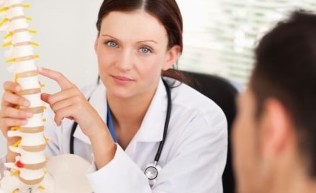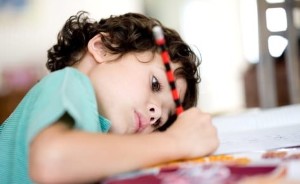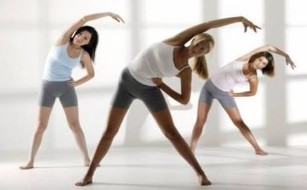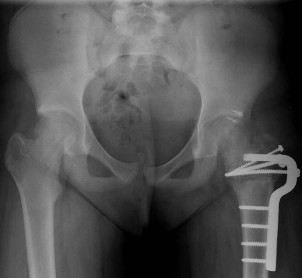Technical development as easy as possible to life a modern. Where once there were factories, now, for the most part, there are shopping centers, movie theaters and beauty salons. Process of goods production is mechanized and almost completely automated. Production And in the field is gradually replaced by services. Man, at the same time, sitting for hours in the office trying to come up with another effective way to sales, marketing trick or the other option is to make money for other people's wallets. And then he the stabilisation and association agreement with the car nice and comfortable in the driver's seat comes from the state. Of course, I paint a perfect picture without referring to the congestion, stuffy offices, public vehicles, which is located in the central position of the environmental section of the population, etc. But who does not want to live comfortably?

However, the use of what is such a comfort? We have already been declared the century of the century of inactivity, which causes a lot of unpleasant consequences. Cardiovascular disease, massive obesity, hypertension, sciatica, and other ailments is attached to your own car, soft and office chair own. But the most common disease, which I pay for our lack of exercise, is lower back pain. That he will be the focus of this article.
Osteochondrosis
What is osteochondrosis? Consider the mechanism of development and type of the disease, When I hear degenerative disc disease, in the first place, you can think of and back pain muscle. However, the disease directly the muscular system is not affected. Pathological changes occur in the cartilage, which exists in all the joints of the body.
Cartilage tissue has a protective shock absorption and functions. In addition, it will share a special secret, which lubricates joint surfaces to reduce friction during the movement of the bones. But in some cases, the cartilage wears out (decay). In addition, metabolic disorders, lack of certain vitamins minerals and, and also hereditary metabolic dysfunction of the disturbed nutrition of the cartilage tissue, it loses its strength and flexibility. This condition is called kwashiorkor.
So, osteochondrosis – a degenerative-dystrophic changes in cartilage. In theory, pathological changes occur in any can contact. But in practice, low back pain often affects our spine. And depending on what part of the spine is a localized process, to distinguish between lumbar, thoracic and cervical osteochondrosis.
Imagine our spine. It consists of separate bones of the vertebrae. Each vertebra has a body and several processes. The body and appendages has a hole, through which passes a lead of the spinal cord. The vertebrae are arranged in such a way that the hole of the hollow pipe shape, which is called the spinal canal. The body of the vertebrae placed one above the other are, and between them is a layer of cartilage – the intervertebral cartilage discs. They act as shock absorbers, mitigating the effects of shocks and reduce the load on the spine, walking when a person or other movements. The vertebrae are similar in structure and differ in vain in size. With the exception of a few fused vertebrae sacrococcygeal division and seven elements of the cervical spine,which differ from each other in structure.

The spine is represented by four departments:
- neck (1 7 vertebrae);
- chest (8. ny-12.);
- the lumbar spine (13 th to 18 th);
- the sacrum and the coccyx (this division consists of the bones still United, and therefore not involved in the pathological process).
Accordingly, osteochondrosis of the spine is divided into three main types that we mentioned above.
Type of osteochondrosis
The most common osteochondrosis of the cervical, because cervical vertebrae is different and structures of the muscles that support the spine, this part is rather poorly developed. Over time, the cervical or other region of the spine plate of transparent cartilage begins to harden, lose its elasticity, and the vertebrae approach each other. The result can be a pinched nerve fibers or blood vessels. As a result of disturbed innervation and blood circulation to the appropriate authorities, which leads to irregularities in their work, reduce motor activity, the appearance of pain syndrome. In addition, when the displacement of the vertebrae, the shoots can irritate the muscle tissues in this area, which leads to muscle spasms. But against the background of the disease, muscle machine and so on to work double to compensate for the reduced shock-absorbing function of the spine and the position of the output of the vertebra.
Along with the neck, quite common as lumbosacral degenerative disc disease, which develops on the background of the regular large loads on your back, weight lifting and so on.
Thoracic osteochondrosis is a little less than the first two varieties of the disease. Moreover, its diagnosis is difficult because the disease has several non-specific symptoms similar to the symptoms of angina. Particularly noteworthy is the fact that the body of the vertebrae, cartilage, nerves, the brain and not the spinal cord equipped with pain receptors and therefore pain in osteochondrosis is of indirect nature. Osteochondrosis is also some varieties, Osteochondropathy, which is slightly different etiology. Me mentioning our article.

The causes of the disease
The main reasons for the development of degenerative disc disease – exercise – I think our story begins. As he said, the child's life! What about the lack of sufficient motor activity may affect the state and our joints of the spine? In asia that we are back to the natural muscular corset that supports the spine to help him properly and perform its functions. However, without physical strain on the muscles weakened, the spine loses support, the main burden falls on the intervertebral cartilage plates, and in the end he degenerative changes made.
However, excessive exercise, such as professional athletes, can also lead to degeneration of cartilage degeneration and and thus trigger the development of osteochondrosis, Osteochondropathy, and others. Thus, in this context, the need to adhere to the Golden mean, in order to avoid health problems.
An important role in the development of degenerative disc disease is the style of modern life. In addition, the lack of adequate physical activity, this may be due to unbalanced diet, lack of vitamins and the necessary minerals, diet, Smoking, alcohol consumption, use of and everyday life in the workplace with the wrong furniture, sleep on a soft mattress, habitual bad posture, driving, working conditions, jneD.
All this inevitably leads to malnutrition of the cartilage, loss of the quality of its properties (strength, elasticity) and the development of osteoarthritis. Flat feet is another reason for the quite common low back pain. It would seem, what relation to the deformation of the arch of the foot can be pain in the lower back and especially the neck? It turns out that the direct. The human foot is designed so that it is able to properly distribute the weight of the whole body, when walking. Development the bones of the foot form two arches – longitudinal and transverse. Due to this structure, together with the emergence of the physiological curves of the spine became possible human bipedalism. The arch of the foot If for one reason or another is flat, the entire load is transferred to the spine. And this ny back pain limitation of range of motion, and even migraines.
In recent years, many researchers are inclined to the fact that the past ways to the development of osteoarthritis affects heredity.
Symptoms of degenerative disc disease
How to recognize degenerative disc disease? The symptoms of osteoarthritis are very different. Although most pointless to know us the most important signs of this disease: muscle pain makes movement difficult and. However, we deliberately spoke in detail the mechanism of development of degenerative disc disease. After all of this disease marked by are directly related to the processes that occur during the development of the pathology.
So, as we already know, the symptoms of degenerative disc disease associated with tight blood vessels nerve fibers ny, ny, if and nutrition the violation of the innervation of each of the muscles, organs and tissues. So, pathological changes relate not only to the muscular system. So, symptoms of cervical degenerative disc disease is and frequent headaches, and even dizziness, accompanied by pain and neck muscles of the shoulder girdle.

Headache in cervical osteochondrosis is a vascular origin: the blood of the son flow to the brain is disturbed, and the experience of nerve cells in hypoxia. Is also associated with it, vertigo, which can sometimes even be unconscious of the Notes. Blood son of a disorder associated with cervical osteochondrosis, in rare cases, can also cause hearing loss of the patient, a violation of movement coordination (unsteadiness of gait), hoarseness of voice. Snoring can also indicate the development of osteoarthritis.
If degenerative changes affect the spinal discs of the thoracic spines , degenerative disc disease is manifested by pain behind the corresponding localization, accession asthmatic component, heart pains. Sometimes you may experience shortness of breath patients and arrhythmia. Often confused with the emergence of cardialgia in patients with ischemic heart disease (angina pectoris). But such a heartbreak, still has a number of distinctive features. Subjectively they can be perceived, such as "number" the chest. Intake of nitrates and other antianginal funds does not relieve the pain. Angina in humans, increased anxiety and even the fear of death. Thoracic degenerative disc disease have no such symptoms. Cardialgia caused by osteochondrosis can Sometimes take a few days, but it is not a threat to human life. Coronary heart disease, heart pain is intermittent, but they can lead to forget the development of myocardial infarction, and premature medical aid at an attack of angina may cause death.
Osteochondrosis of the lumbosacral spine is characterized by pain in the lower back. The pain may radiate to the lower limbs. The patient may also experience difficulty walking, which is associated with a reduction in the tone innervated by this segment of the spinal cord to the muscles. The pains are shooting in nature. Sometimes the patient is difficult to raise back, change or get out of bed the position of the body. Reflexes of the lower extremities osteoarthritis of the lumbosacral reduce.
Osteochondropathy
We have already touched on in this article such a problem, as children of lower back pain. Symptoms, treatment and this disease differ from adults similar. This is due, primarily, with the concept assigned to the current sources is associated with a number of different osteochondrosis, Osteochondropathy. The most common are:
- disease Keller,
- disease Osgood–Schlatter,
- disease Chairman-Can,
- disease Legg-calve-Peters.
Keller disease occurs in children, aged 8-12 years, but also can develop in adulthood, which a lot of pay less often. When this disease affects the spongy bone of the foot. In addition, there are two types of this disease. Disease Keller the first type is affecting the bone. If the disease occurs in the second type, pathological changes affecting the metatarsal bones.
Schlatter disease affects the tibial bone below the patella region and developed in the age group 11 to 14 years. Factors predisposing to sports game (football, basketball, running, jumping, etc.). The emergence of the disease can be the result of a bone of conflict between the speed of young people in the growth and development of cartilage.
Disease Chairman-in May or curvature of the spine, is one of the varieties of thoracic osteochondrosis. Usually This condition develops in children and young people, whose age is 8-14 years, for a long time but the address of the current sources may not notice the parents and any significant deviations. The visible symptom is a wrong position of the child.

Disease Legg-Calv-Perthes is a disease that affects the thigh bone, or rather its director, the area which is cartilage. The disease most often affects 4 to 14 years of age and appear lethargic. This pathology occur in necrotic changes in the tissues of the femoral head, which is non-infectious (aseptic) character. Most often, the cause of the disease is a genetic predisposition. In the initial stage, the address of the current sources begin to limp. If the baby pain in the thigh and the knee, especially when driving.
Prevention of osteochondrosis in children's moderate physical activity, wearing comfortable shoes, repair and maintenance of the correct posture, which is a special set of exercises. Lower back pain and pregnancy of course, if the woman suffers from osteoarthritis, that it is planning a pregnancy, she has to deal with the treatment of this disease. Completely cure Although this disease is impossible, because the return is not fully cartilage.
Together with sufficient exercise, moderation, balance and eating helps to normalize weight and after that keep control. Normal weight – the key to prosperity and the health of your back. Back Healthy is strong and refreshing sleep and not have a headache, prevention of diseases and other musculoskeletal system. Love yourself, pay more and attention to take care of your health!
































